by Luise Guest
During the last decades of the 20th century and the first decade of the 21st, Chinese avant-garde artists were challenging previous taboos on representations of nudity and sexuality. A number of women artists began to make work from a feminist standpoint, using their own bodies, or the bodies of other women, to explore female subjectivities. Examples include Chen Lingyang’s photography series Twelve Flower Months (1999-2000) depicting the artist’s bleeding genitals during her menstrual cycle, Cui Xiuwen’s notorious video of sex-workers filmed in the toilets of a Beijing nightclub, “Ladies Room” (2000), and performance artist He Chengyao’s bare-breasted walk along the Great Wall in 2001, “Opening Up the Great Wall” (1). All these works received varying degrees of public opprobrium at the time, and work by women artists (nüxing yishu) came to be characterised, rather, as focused on private, domestic and emotional concerns in contrast to the public and the political – an essentialist view that persisted until very recently.
The relationship between Chinese women artists and feminism is an ambivalent one, shadowed by memories of the state-sponsored feminism of the past, and their awareness that the concerns of women in China are distinct from those of Euro-American feminists. Attempted transcultural dialogues have often been thwarted by mutual misunderstandings. Despite the flurry of translated feminist texts and theoretical positions that entered the discourse in China from the late 1980s (thoroughly documented by Min Dongchao) (2) , and despite significant women-only exhibitions in the 1990s and early 2000s that have been analysed in the work of scholars such as Peggy Wang, Tao Yongbai, Shuqin Cui and Sasha Su-Ling Welland, few mid-career women artists today overtly identify with feminism, even those whose work examines aspects of gendered experience. (3)
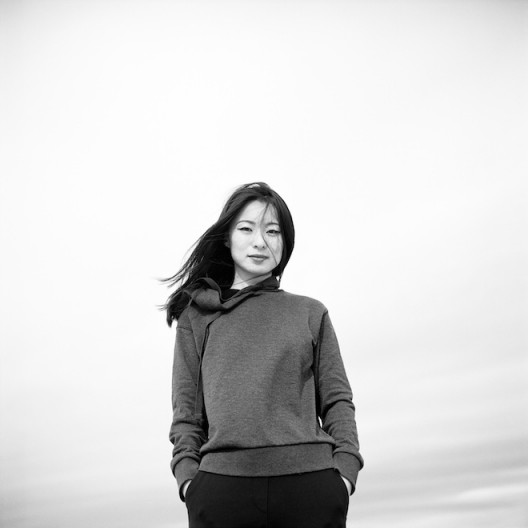
There are, however, recent exceptions to this ambivalence in artists of a younger generation. Echoes of the transgressive works of the early 2000s resound in the ceramics practice of Liu Xi (b.1986, Zibo, Shandong). Liu’s frank exploration of gender and sexuality is courageous. Her work examines hidden female histories, and the sometimes fraught and complex relationship between the individual and society, at the same time challenging conventions of porcelain and ceramics production with unorthodox combinations of materials and methods of display, revealing both technical virtuosity and a willingness to engage with difficult ideas. “Our God is Great” (2018-2019), for example, is an installation of 52 porcelain vaginas — or vulvas, to be anatomically accurate. Their intricate labial folds and clitoral hoods, made with fine porcelain coloured with black ink after firing, reveal the astonishing variety and beauty of female anatomy. The work is highly sensual: the embossed textures and impressions left by the artist’s fingers as she moulds each form become a metaphor for erotic touch.
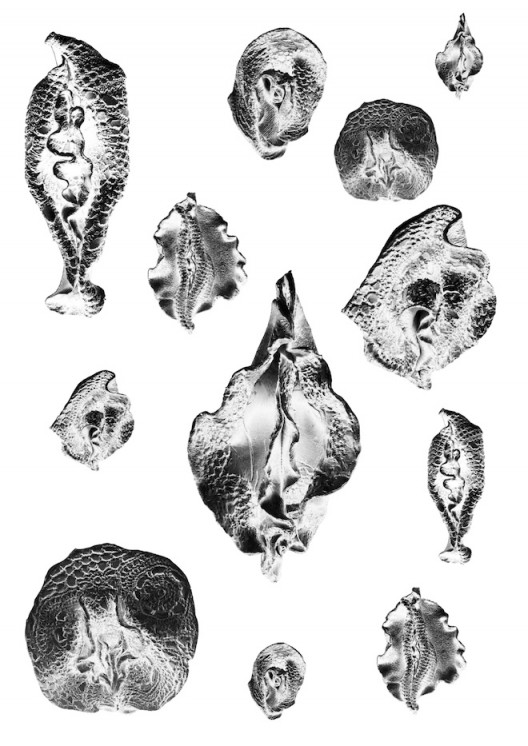
低至尘土,尺寸可变,炻器,泥巴,2018,
摄影:Eric Set
© Gaya Ceramic Arts Center, Bali
伽雅陶瓷艺术中心,巴厘岛
The malleability of clay and its literal earthiness are emphasised in a previous work using raw, unfired stoneware. “Low to Earth”(2018) was created during a residency in Bali. It presents less explicitly vaginal forms, although their coral-like folds and creases create visual associations with female genitalia. The work was exhibited as a floor piece, with the audience invited to walk around and through the installation, during which time inevitably some pieces were, literally, downtrodden. Liu says that both works are intended to celebrate women, but also to recognise the social structures — in China and everywhere — that continue to disempower them, rendering women “low to earth” – persistently less valued than men but also, always and everywhere, defined as “nature” to male “culture”. Liu’s earlier Erotic Series similarly explores sexuality, but these works feel very different. The milky, luminescent ripples and folds of “Boundless Night” (2016) and “Summertime No. 2” (2017) evoke the joyful abandon of lovers in the first throes of passionate discovery.

夜茫茫No.2,瓷,54x34x9cm,2016,摄影:陶敏
Liu Xi’s work is directly informed by her own experiences. She was born in Zibo, in the centre of Shandong Province, at a time when the birth of a girl child was still considered a grave disappointment. Her recent travels to Indonesia, India, and Mexico have taught her that such patriarchal devaluing of the worth of women is a global problem, and a continuing issue for women in China. In a recent interview, Liu told me:
“I believe my little hometown has the same situation. We have a big percentage of the population living in countryside areas in China. I still hear stories from my elementary school classmates of domestic violence, of blaming themselves for having a daughter …” (4)
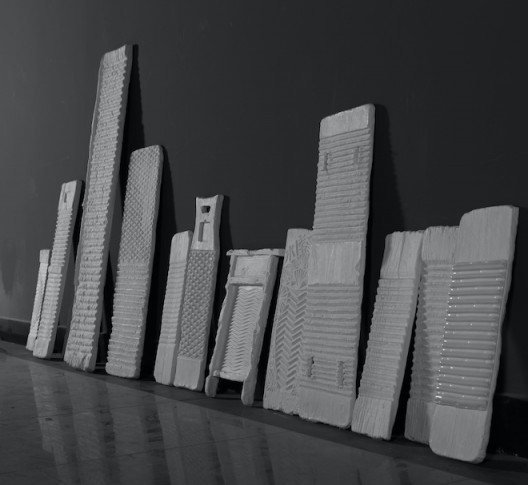
妈妈, 瓷, 125x365x15cm,2015-2020,摄影: 陶敏
The installation series MaMa (2020), again places women at the centre of the narrative but uses the body as a trace, or a memory, rather than as a physical presence, poetically referencing the often invisible, unacknowledged work of anonymous women. Cast in white porcelain, wooden washboards once commonly used in China stand upright like ancient memorial stele. But these fragile monuments are unembellished by any inscription or epitaph — their text is the roughened, weathered ridges on which women once scrubbed laundry. Liu says that she herself used a washboard for the five years she spent living in the dormitory of Beijing’s Central Academy of Fine Arts, far from her hometown, missing her mother, and feeling homesick:
“…which always reminded me of the unconditional love that my mother showed for me all those years, washing clothes, cooking, taking care of me… My mother got a washing machine eventually… The washboard she used in the past was abandoned in the corner, and when I saw this scene, I brought this first washboard from my mother into my porcelain world.”
“MaMa” is an ongoing project. After Liu Xi had cast that first board, so replete with nostalgia, she began to collect them from friends and strangers, including a very large communal washboard once used by village women beside the river, another from an ethnic minority group in the far northeast of China, one made from bamboo, and another dating back to the Cultural Revolution. Like her porcelain vaginas, each one is unique, she says, and each bumpy, weathered surface tells the story of a woman, and reveals an unwritten female history. Liu’s decision to cast the wooden washboards and re-create them in white porcelain evokes the pages of a book, but also renders them ghost-like. Lined up against the gallery wall they recall tombstones.
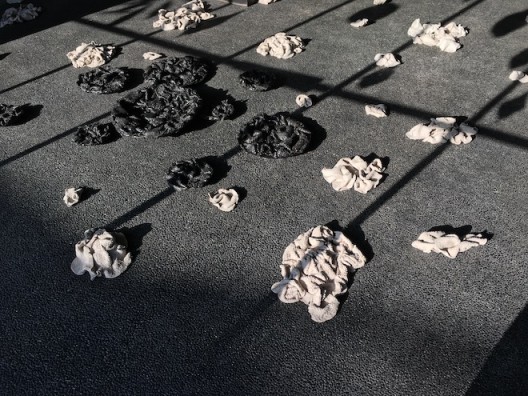
低至尘土,尺寸可变,炻器,泥巴,2018,
摄影:Eric Set
© Gaya Ceramic Arts Center, Bali
伽雅陶瓷艺术中心,巴厘岛
Liu Xi is not the only Chinese artist to have used washboards as symbols of female labour. Tao Aimin’s evocative “River of Women” (2005), “Secret Language of Women” (2008) and other installations featured washboards as found objects or used them as surfaces from which to make prints and rubbings, representing a lost history. Liu Xi’s installation is distinctive, and quite different, however, in its paradoxical materiality. The fragility and delicacy of white porcelain used to simulate the rough-hewn forms of washboards, juxtaposes the elite material of the Imperial kilns with the vernacular of domestic labour and rural life, the weathering of the wood a metaphor for the roughening of hard-working hands.
Paradox is at the heart of Liu Xi’s practice. Working between her studio in Shanghai and the ancient porcelain capital of Jingdezhen, between a Chinese aesthetics of porcelain and global contemporary art practice, her work is technically accomplished yet also innovative and experimental. The very materiality of clay is paradoxical — soft and malleable, it becomes hard and brittle once fired. Porcelain is imbued with associations of Chinese history, its imperial prestige and status, yet clay is dug from the earth. Liu Xi’s work encompasses these binaries, just as she explores paradoxes of female strength and vulnerability.
In 2017, her “Heart Dirt” series explored the possibilities of applying black ink to the fired surface. Once fired, porcelain is very porous while it remains unglazed. Liu sprayed or brushed Indian ink over each form, which was absorbed instantly. Explaining her use of this black/white, yin/yang binary she says:
“Porcelain is a pure white colour after firing, with fragility [whereas] ink is strong, dark black, with the power to dye, contaminate, and cover the surface. They both have a long history individually, but nowadays […] porcelain and ink combine to reflect the relationship between the individual and society. We were born as blank, innocent and pure, and we are educated by our surroundings, for good or bad. But authority, unspoken rules and propaganda have a very huge impact on us […] ‘Heart Dirt’ is about the helplessness of the individual, when it’s hard to confront our surroundings …”
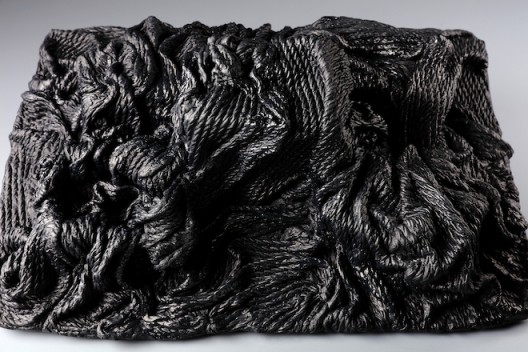
瓷,印度墨,尺⼨可变,2017,摄影:洪明志
© Yingge Ceramics Museum,TAIWAN
台湾莺歌陶瓷博物馆
Liu Xi’s hometown has a long history of ceramic and glass production, and she has been fascinated by ceramics since her uncle gave her a small abstract piece when she was five years old. When it broke, she mended the crack with glue. Later, as a first-year student at the Central Academy of Fine Arts she happened upon a raku firing taking place in the Ceramics studio. She remembers how the students were using:
“… fire, clay, sawdust, paper, dry leaves — a magic effect was happening on the sculpture surface, I was super excited about the process and the final visual effect. Afterwards I always went to check the activities there and gradually I made the decision to work in Ceramics. Ceramic is fragile and needs more care. It reminded me of my childhood memory. I want to overcome that ‘crack’.”
This metaphor of mending, or healing, has great resonance in Liu Xi’s profoundly humanist body of work. Her feminism is underpinned by the realisation that patriarchal gender norms distort men as well as women, limiting the possibilities for us all. Likening human frailties with the risks and joys of working with porcelain, she says:
“Human beings are a paradoxical combination. Men, women, poor, rich, old, young… The fragility and strength here, I want to explore the feelings and identification of human resonance […] I want to widen the distance/space between fragility and strength as much as possible, put the person in this space, and feel the elasticity of this maximum distance […] maybe women sometimes underestimate themselves, or men are more vulnerable than women. Because of [our] fragility, each of us becomes a person with a story. Fragility is the driving force behind all energy.”
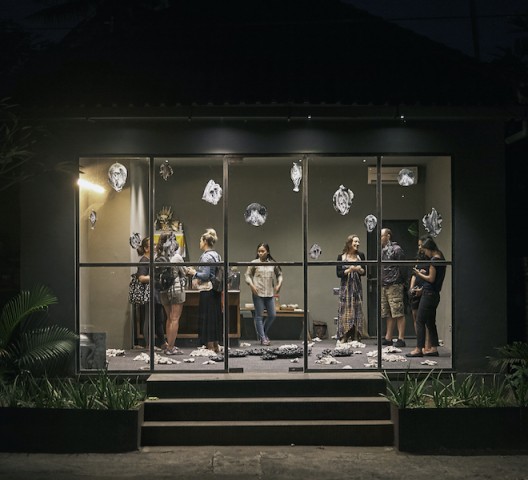
低至尘土,尺寸可变,炻器,泥巴,2018,
摄影:Eric Set
© Gaya Ceramic Arts Center, Bali
伽雅陶瓷艺术中心,巴厘岛
About the Artist
Liu Xi 柳溪 (b.1986, Zibo, Shandong) studied in the Sculpture Department of the Central Academy of Fine Arts, Beijing, graduating in 2010. Liu’s innovative and experimental work in ceramics explores ideas about sexuality and gender, identity, and freedom. She has participated in exhibitions in China and internationally, including in 2019 her first solo show, ‘Earth in My Hands, Fire in My Heart’ at Art + Shanghai Gallery. Liu Xi has participated in artist residencies in Bali, Taipei, Yixing, and Mexico. Liu Xi lives and works between Shanghai and Jingdezhen.
Notes
1.The works of these artists, and interviews with them, are included in the author’s 2016 book, Half the Sky: Conversations with Women Artists in China. Sydney: Piper Press.
2. Min Dongchao., 2017. Translation and Traveling Theory: Feminist Theory and Praxis in China. London and New York: Routledge.
3. Tao Yongbai., 2020, “Off the Margins: Twenty Years of Chinese Women’s Art (1990-2010)”. In: positions 28:1. Duke University Press, pp. 65-86; Shuqin Cui., 2016, Gendered Bodies: Towards a Women’s Visual Art in Contemporary China, University of Hawai’i Press; Sasha Su-Ling Welland., 2018, Experimental Beijing: Gender and Globalization in Chinese Contemporary Art, Duke University Press and Peggy Wang., 2013. “Interrogating “Chinese Women’s Art”. In: Breakthrough: Work by Contemporary CHinese Women Artists. Brunswick, Maine, USA: Bowdoin College Museum of Art, pp. 9-11.
4. The author’s interview (via email) with Liu Xi, April 2020. The correspondence was in English and has been lightly edited.